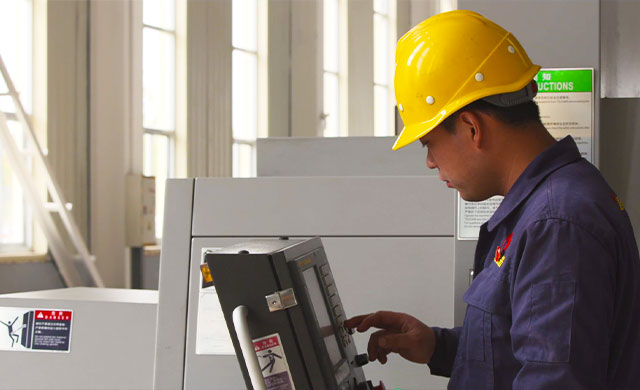
Nov . 17, 2024 11:37
Back to list
gas booster
Gas Boosters Enhancing Efficiency in Gas Transportation
In the realm of gas transportation and distribution, efficiency and safety are paramount. As the global demand for natural gas continues to rise, industries and consumers alike are seeking ways to optimize the delivery process. One effective solution that has gained prominence is the use of gas boosters. This article delves into what gas boosters are, how they work, their applications, and the advantages they bring to the gas industry.
Understanding Gas Boosters
A gas booster is a mechanical device designed to increase the pressure of natural gas or other types of gases within a pipeline system. These devices play a crucial role in maintaining the flow rate and pressure of gas as it is transported from production sites to consumers. This is particularly important in long-distance pipelines and distribution networks where pressure losses can occur due to friction and elevation changes.
Mechanism of Operation
Gas boosters function by drawing in gas at a lower pressure and subsequently compressing it to a higher pressure. The most common types of gas boosters include rotary screw compressors and reciprocating compressors, each operating on different mechanisms to achieve the desired pressure increase. The choice of compressor often depends on the specific requirements of the application, including the gas type, the pressure increase needed, and the location of the system.
Rotary screw compressors utilize two interlocking helical screws to compress gas. As gas enters the compressor, it is trapped between these screws and progressively compressed as it moves along the screw axis. This design allows for continuous gas flow with minimal pulsation, making it suitable for various applications.
In contrast, reciprocating compressors use one or more pistons to compress gas within a cylinder. The pistons move back and forth, drawing gas into the cylinder and then compressing it when they move upward. While this method is effective for generating high pressures, it may produce more pulsation compared to rotary designs, which can affect the smoothness of gas flow.
Applications of Gas Boosters
Gas boosters find applications in a variety of sectors, including
1. Natural Gas Distribution Boosters are often installed in distribution networks to maintain pressure levels, ensuring that natural gas can reach homes and businesses efficiently. They help manage the pressure fluctuations that can occur due to varying demand.
gas booster

2. Industrial Use Many industrial processes require specific gas pressures for operations. Gas boosters enable manufacturers to maintain the necessary pressure levels to ensure the smooth functioning of their machinery and equipment.
3. Oil and Gas Production In upstream applications, gas boosters are used to enhance gas recovery from reservoirs. By increasing the pressure in the well, boosters can facilitate the extraction process, leading to increased yields.
4. Renewable Energy Systems As renewable energy sources such as biogas become more prevalent, gas boosters help manage the integration of these gases into existing distribution systems, allowing for a smoother transition towards greener energy solutions.
Advantages of Gas Boosters
The implementation of gas boosters in gas transportation systems offers several advantages
- Improved Efficiency By maintaining optimal pressure levels, gas boosters enhance the efficiency of the entire gas distribution system. This leads to reduced energy loss and lower operational costs.
- Increased Safety Properly functioning gas boosters can help prevent pressure-related issues such as leaks or ruptures in pipelines. By stabilizing pressure fluctuations, they contribute to the overall safety of gas transportation.
- Flexibility Gas boosters can be adapted to different types of gases and varying operational demands. This flexibility is crucial as industries transition to various sources of energy.
- Lower Environmental Impact Efficient gas transportation reduces the carbon footprint associated with gas distribution. By optimizing the process, gas boosters not only improve performance but also contribute to sustainability initiatives.
Conclusion
As the demand for efficient gas transportation continues to grow, gas boosters have emerged as indispensable tools in the gas industry. By enhancing pressure control and ensuring safe distribution, these devices play a critical role in meeting global energy needs while supporting sustainability goals. With ongoing advancements in technology and engineering, the future of gas boosters looks promising, paving the way for even greater efficiencies in gas transportation systems. As industries evolve, the role of gas boosters will remain pivotal in facilitating safe, reliable, and efficient gas delivery.
Latest news
-
Safety Valve Spring-Loaded Design Overpressure ProtectionNewsJul.25,2025
-
Precision Voltage Regulator AC5 Accuracy Grade PerformanceNewsJul.25,2025
-
Natural Gas Pressure Regulating Skid Industrial Pipeline ApplicationsNewsJul.25,2025
-
Natural Gas Filter Stainless Steel Mesh Element DesignNewsJul.25,2025
-
Gas Pressure Regulator Valve Direct-Acting Spring-Loaded DesignNewsJul.25,2025
-
Decompression Equipment Multi-Stage Heat Exchange System DesignNewsJul.25,2025

